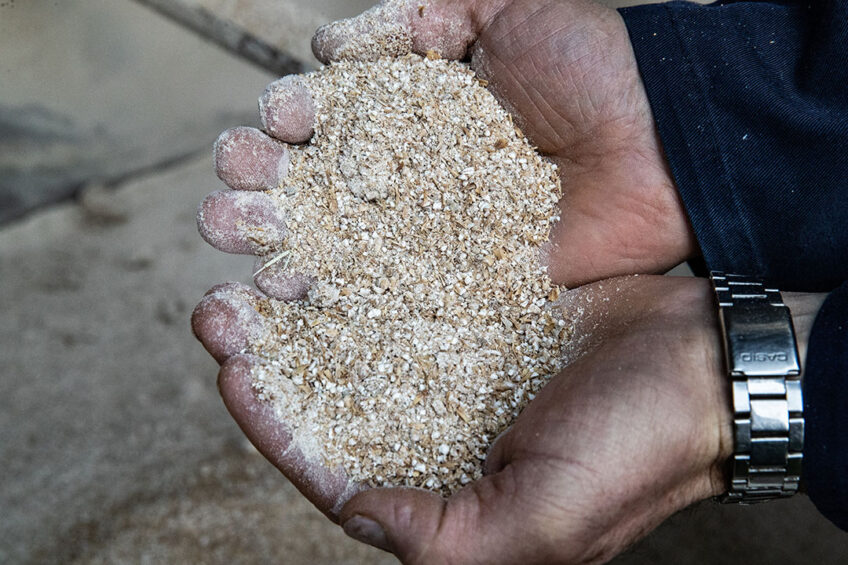Importance of soybean meal particle size in poultry feed

Soybean meal is a major protein source in poultry diets and one of the best quality ingredients due to its relatively high protein content, good amino acid profile and high bio-availability. However, the nutritional value of soybean meal and the cost of feed manufacturing are greatly affected by particle size.
A study conducted by Dr Carl Parsons and his research team at the University of Illinois Urbana-Champaign, USA, determined and compared the impact of soybean meal particle size on growth performance and nutrient digestibility using the precision-fed rooster assay method and analysed the effect of soybean meal particle size on growth performance, gizzard size, feed efficiency, and nutrient digestibility in young broiler chickens, as well. The research trials took place over a 6-month period.
Dr Parsons is professor of Animal Sciences at the University of Illinois Urbana-Champaign (Illinois is the top soybean-producing state) and his research focuses on the digestion, absorption and utilisation of dietary components, such as energy, amino acids and minerals in feed ingredients, with an emphasis on poultry. This research was funded by the Soy Checkoff (supported entirely by soybean farmers) and the United Soybean Board which directs the efforts of the Checkoff. Texas A&M University was also involved in this study by providing soybean meal processed to different particle sizes.
Previous studies showed that feeding whole grains, such as wheat, barely and larger particle corn, has beneficial effects on poultry health and performance. Thus, it was hypothesised that feeding larger particle size soybean could also improve health, growth performance, gizzard size and nutrient digestibility in poultry. In addition, feeding larger particles would save on feed processing and manufacturing costs, since this reduces the amount of energy needed for the grinding process.
General hypothesis
It was argued that feeding larger particle size soybean meal could potentially increase the size of the gizzard (an important digestive organ in poultry). As a result, the feed would stay longer in the gizzard which functions as the main stomach in poultry. The enlarged gizzard would digest and grind the larger particle size soybean meal into smaller particles which, in turn, would improve intestinal health, growth performance and nutrient digestibility in poultry.
There were 2 different approaches used in this study.
Approach 1: The rooster digestibility assay
In this short-term assay, single-comb white leghorn roosters were fasted for 26 hours to empty their gastrointestinal tract and then tube fed soybean meal samples. After being tube fed, each rooster was placed in an individual wire cage over an excreta collection tray and their excreta, including undigested materials, were collected for 48 hours.
There is a potential that larger particle size feed has a detrimental effect and could reduce nutrient digestibility if the feed does not stay in the gizzard long enough to be ground. In this assay the roosters were not exposed to the large particle size feed and their gizzards did not enlarge. However, no positive or negative effects of feeding larger particle size soybean meal were observed in this short-term trial.
Approach 2: Broiler chickens fed soybean meals with various particle sizes
This was done for 21 days, from 2-23 days of age. At the end of the trial weight gain, feed consumption and feed efficiency (gain: feed ratio) were calculated and gizzards were excised for weight and size inspection. The gizzard size, growth performance and feed efficiency of broiler chickens fed larger particle size soybean meal were greater than those fed smaller particle size feed. This trial was followed by another experiment to investigate the impact of particle size on phosphorous digestibility.
The results showed that larger particle size soybean meal had enhanced phosphorous availability and digestibility, probably due to the increased gizzard size and the longer time that the feed stayed in the gizzard. Since phosphorous is important from an environmental standpoint, reducing the amount of phosphorous excreted by poultry would decrease negative environmental impacts.
Significance of the findings
The most important findings were that feeding larger particle size soybean meal increased gizzard size, which improved growth performance and enhanced the availability and digestibility of phosphorus. Previous studies determined that feeding whole grains, such as wheat and barley and large particle size corn, augmented gizzard size. However, the gizzard must work harder when poultry are fed these grains.
Soybean meal, however, is more soluble and becomes soft when wet which is beneficial from a digestion standpoint. Because of this, it was not certain whether soybean meal would increase gizzard size. The results of this study, however, showed that larger particle soybean meal did indeed increase gizzard size which can improve nutrient digestibility and increase gastrointestinal health. Plus feed stays longer in the gizzard which is a very acidic environment capable of killing harmful pathogens.
Consequences
Most poultry diets are fed in pelleted form which results in less feed wastage, improved production efficiency through increased feed intake and live weight gain, as well as an improved feed conversion ratio. Further study is required to investigate the effect of particle size on pelleting poultry feed. There is a potential that an increased particle size for feed could have a negative effect on pellet quality. Therefore, it is necessary to determine the optimum soybean meal feed particle size (the largest particle size possible) to the point where there are no detrimental effects on pellet quality.
Join 31,000+ subscribers
Subscribe to our newsletter to stay updated about all the need-to-know content in the poultry sector, three times a week. Beheer
Beheer











 WP Admin
WP Admin  Bewerk bericht
Bewerk bericht